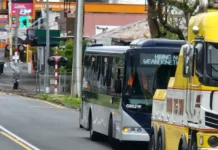The trimaran ‘Utuma’atu is expected to be on a new journey by becoming a resource to train new people how to sail it before it returns to service.

The trimaran was the brainchild of the late Dr Sitiveni Halapua, a former academic and Member of Parliament.
The project was intended to offer a cheaper, faster alternative for shipping food and cargo to the Niuas.
It was designed to take about 48 hours to sail the more than 600 kilometers to the outer islands from Nuku’alofa, carrying 12 people and two tonnes of cargo.
The wind-powered vessel is undergoing maintenance in Nuku’alofa after it was damaged for the third time since it was launched in New Zealand in 2017.
During Cyclone Harold in April 2020 the powerful wind lifted the trimaran and threw it onto the land where it was rammed into an object like an iron rod.
That damage was assessed in March and April and some people from New Zealand are currently in Tonga to repair it.
The cyclone damage came after a large ship smashed into the 50-foot vessel while it was anchored at the Fāua wharf.
In 2018, after the trimaran returned from a test voyage to the Niuas, the Category 5 tropical cyclone Gita damaged it.
The boat was also robbed and the project managers had to call on the public to return the stolen items, saying they were of no use to anyone who did not own a trimaran.
It was a success
Dr Linitā Manu’atu, a researcher at Auckland University of Technology, said she was confident the $900,000 trimaran project was a success despite the series of mishaps which caused it to be out of service several times.
The boat is compartmentalised, meaning it was designed so that any damage caused to it would be restricted only to that area and not to the whole boat.

“That’s one of the very excellent aspects of the artistic design used to construct the trimaran”, Dr Manu’atu, who is a member of the ‘Utuma’atu project organisers, told Kaniva News.
“It was designed to make it difficult to sink”.
She said Dr Halapua had been in contact with Tonga’s Fokololo ‘O e Hau Maritime Poly-Technical Institute in an attempt to create a course to train locals how to navigate sailing ships.
Dr Manu’atu told Kaniva News last week they were advised by experts in New Zealand that qualified navigators of normal ships and larger vessels could not sail the trimaran appropriately.
In 2020 Dr Halapua told media that training new crew was critical factor for the project.
“It is something we don’t have in Tonga and it’s very difficult, extremely difficult, to find young people or people who are interested,” he told Radio New Zealand International.
“So, that’s another thing that I have learned from this project that we have to start teaching young graduates from high school in the arts of sailing.”
Dr Manu’atu said they had approached a number of navigators including a qualified Tongan woman, but the salary she wanted was too high for them.
She said the other option was to employ palagi people to sail the boat, but they wanted to see if the idea of giving locals a formal training would work.
“One of the project’s aims was to establish a training ground for our youth and future generations”, she said.
Dr Manu’atu said the project was also intended to revive the skills of sailing ships.
“We had these skills in the past but they have gone,” she said.
A prototype for the trimaran was acquired after the ‘Utuma’atu was designed.
“So the possibility for more trimarans to sail in Tonga in the near future is already there,” she said.
Dr Manu’atu said when the current maintenance work was completed they would continue looking for a navigator.
She estimated that a salary of a qualified navigator could be around TP$100,000 after they turned down a navigator who wanted TP$60,000 in 2016.
The ‘Utuma’atu was funded through a campaigns organised by the Niua international community and the Halapua family.
The MV Ko e Kelesi Pe
The Niuas are currently served by a recently purchased vessel, the MV Ko e Kelesi Pe.
The passenger and cargo ship has a 469 gross tonnage, is 62 metre long and 11.09 metres wide. It was built in Tokyo in 1998
Dr Manu’atu said the MV Kelesi was a project that was intended to serve large needs for the Niuas. This included sending vehicles, building materials and larger cargo, such as the six 10,000 litre water tanks carried to Niuafo’ou last December.
She said the MV Kelesi was subsidised by the government subsidy while the ‘Utuma’atu was funded by the project management.
For more information
‘Vaka e Masiva’ for the Niuas to be launched







